“I’m 20 years in and it’s pretty typical of any solid, 20-year romance,” Daniel Arnold says, characterising his relationship with New York. “It makes me insane, I’m extremely comfortable, and I deal with it constantly. We’re very attached.” The photographer’s affection for his city is made plain throughout his practice, wherein the sidewalk frequently emerges as a centrepiece and strangers largely unknown are regularly cast as lead characters. This sentiment is only heightened when Daniel joins our Zoom call: wearing a blue hoodie, the city’s moniker is branded across his chest in bold white characters (it’s the same one eagle-eyed fans might have noticed in the corner of a recent Instagram moment involving André 3000).
“It’s a city that looks like the movies,” Daniel says. “I was very afraid of it when I moved here. I didn’t feel I was entitled to any kind of participation, which is good, because it led me to hide behind the camera.” Arriving from Milwaukee in his early twenties – “I had a great excuse, my cousin was running for judge in the Lower East Side and needed help” – Daniel initially wrote for Nickelodeon and MTV, but has since established himself as one of the industry’s most prolific contemporary street photographers.
Having been commissioned to shoot the Met Gala and, in 2016, both the Republican and Democratic National Conventions, he spends his time navigating New York’s five boroughs on foot. (Fashion and celebrity editorials are also a core part of his catalogue.) Having photographed the diamond district for the Safdie brothers’ ahead of them making Uncut Gems, in 2022 he released his first monograph via the pair’s publishing imprint Elara Press. Josh Safdie, writing the afterward for Pickpocket, designated him a ‘human paparazzo’ in reference to the way he records what he sees, employing the same attitude and sense of intrigue whether his subject is a famous pop star or a school kid on their lunch break.
Describing New York as “the perfect computer simulator, photography training ground” on account of its unique energy and high density of interesting people (it “feeds and perpetuates, and even encourages, a certain level of over-commitment,” he says), in Daniel’s photographs the city and its inhabitants are protagonists; the scenes they manufacture become moments of social and cultural magnitude. Below, in celebration of Daniel Arnold: New York Life (open now until 22 December at New York Life Gallery), he shares eight pictures that have informed his trajectory so far.
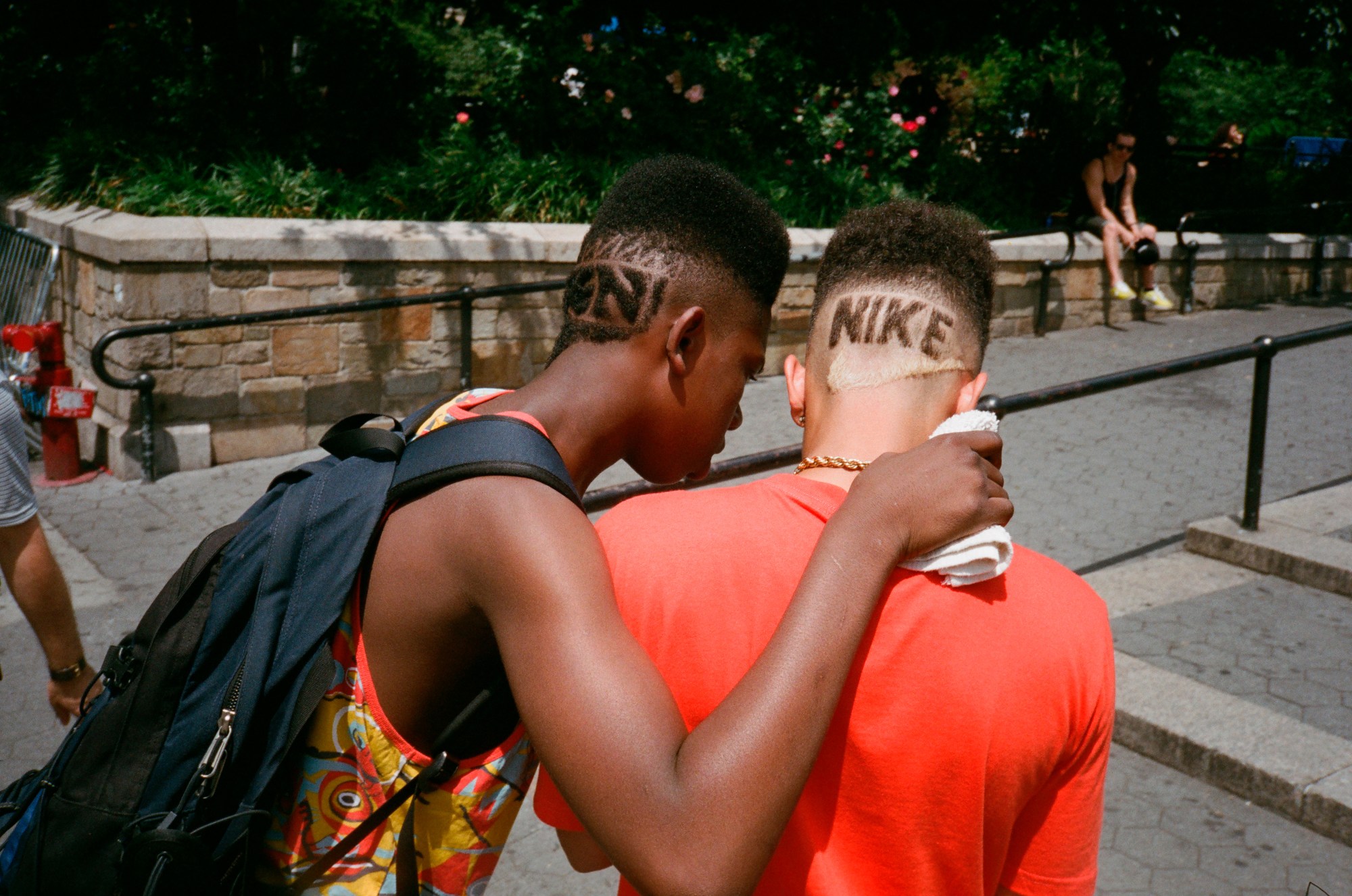
Union Square 6/24/12
I would leave Nickelodeon on my lunch break and just scour the city as quickly as I could. I’d go to Union Square, or walk around Times Square if I was short on time. It was a point where the iPhone had radicalised my appetite for pictures – suddenly I could take these pictures that I was always scared to; I could work on the subway, which was a huge breakthrough. And once I started seeing these pictures that had at that point only existed in my head, it was this really thunderous proof of concept. I pretty quickly decided the phone was not a satisfactory camera for me, although I used it like crazy and continue to, but my sister sent me a Yashica that she had found for like $2. That was a very formative shift, when I started looking at things on film.

Brooklyn Bridge 9/25/13
In September 2013, I was five months out of my previous life. I had very abruptly quit my job on April 1, so if it didn’t work out I could say it was an April Fool’s. There’s evidence here of those first roots of wandering. This picture is just a total miracle, as frustrating and limiting as it may be, it’s kind of the ideal. In terms of my own development, this is such a primitive picture. I didn’t have any idea how to do anything, the fact the woman’s face is so legible in the iPad, I have no clue how I possibly did that. But that early or first explosion of energy, I think was as good as anything I’ll ever do. In those early pictures there’s this build up, and that feels significant as, like, the origins of appetite. Shifting into that mode of storytelling, that I would get these pictures once in a while that would vibrate me, was new.

Coney Island 7/21/14
I had been hired by Vogue, which was a crazy fucking curveball – of all the words I ever thought my name might appear next to, that is one I never imagined – and all of a sudden I’m [now] deep in bed with Vogue. They sent me out with a stylist for a test shoot – there was no proof I could do anything, they’d just seen my Instagram feed. So this is from a fashion job. I didn’t think of the interplay between her and the Grim Reaper, I don’t think I even saw the Grim Reaper. She was wearing uncomfortable shoes, and if I gave any direction it may have been ‘Keep fixing your shoe for a second’. So I didn’t think anything of it. I get the film back and am like, ‘This is crazy, this guy’s checking her out, and this guy is death’. On top of it being this new type of working, it was this incredible discovery moment where I understood the possibility of this crossover. A guy I had worked for previously told me, ‘You know how to find something, you need to know how to make something’. This was kind of the answer to that challenge. There is a way of working where, if I approach it as an emergency, go in uncomfortable, there is the potential for the same surprises I get on the street. It became a defining source of confidence and strategy, embracing the discomfort. And I think it runs through what I do [now], where in addition to the candid real moments, there are instances of a real moment in a fake world.
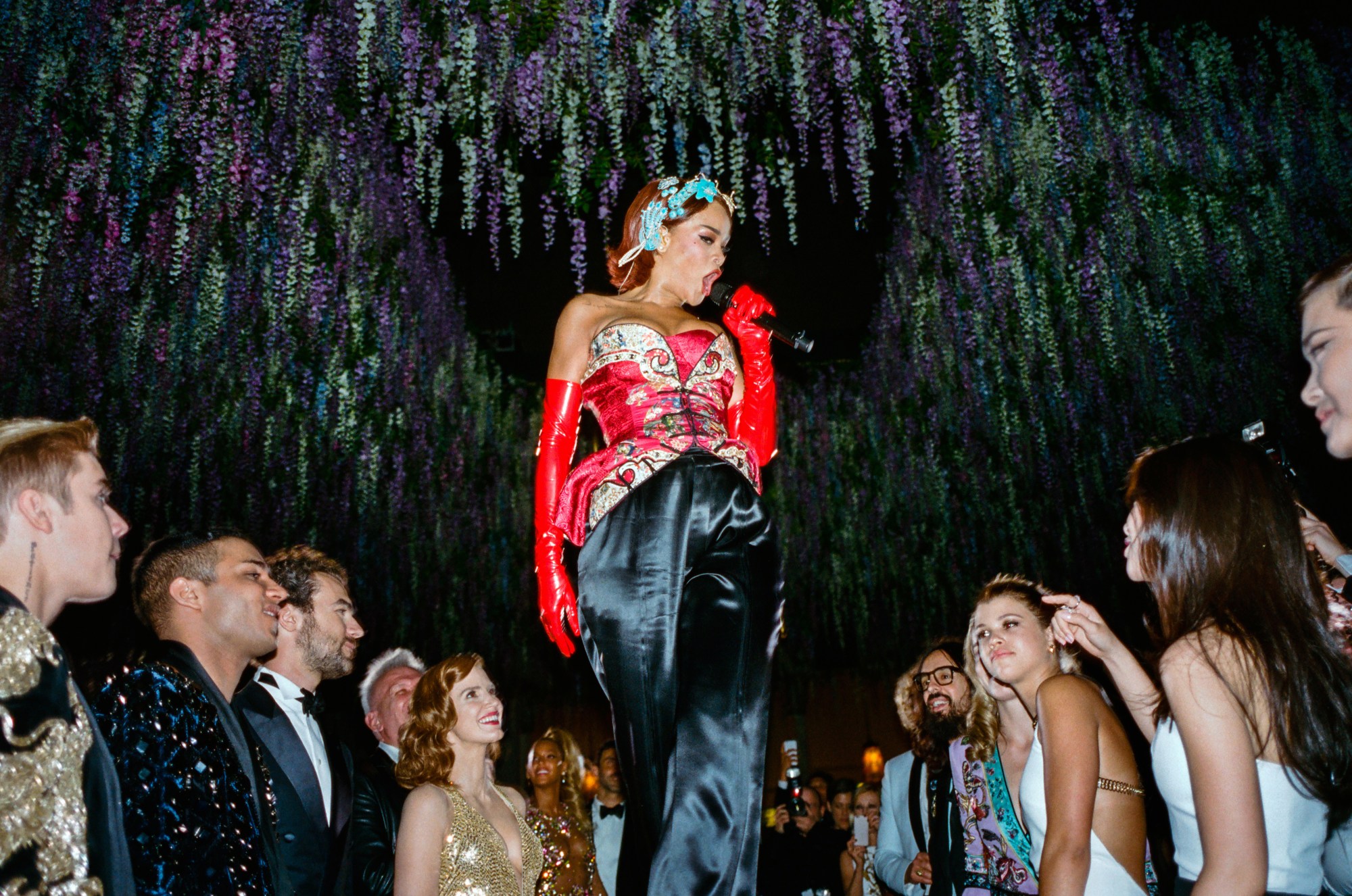
Met Gala 5/4/15
It’s not a picture I have shown or thought about in a long time, and I don’t think it says so much about me, but it was just a giant breakthrough in that continuing story of Vogue. I’d never heard of the Met Gala and I went in just the same way I had done everything – panic, panic, magic. I had such great tools to work with, because every face in that place is so loaded. And obviously it’s a big thread of what people know me for now. In terms of being a photographer for hire, it was this huge breakthrough, having distinctive pictures of celebrities; the magic password to get a million jobs. So it is kind of emblematic of this moment of transition, where I went from desperation, having quit my job with no plan, to at least some vision of eventual solvency. Like, can I do this job this way and really survive, come out with work that resonates not just with an audience, but with me? I look at those pictures, and I want more of those pictures, which is always a good indicator.

Worth and Baxter 5/13/17
It’s a wedding party outside of the courthouse, in this sort of impossible formation – I couldn’t have set it up better if I was a genius photographer. I don’t think I even looked through the viewfinder, I just knew that something good was happening over there. I had started working with the New York Times. It was right after Bill Cunningham died and they had this giant chunk of real estate that had been his for all time. My friend Eve Lyons assembled a roster, giving us these open ended, longish term assignments. This was maybe the third or fourth. I was assigned to patrol the city clerk’s office, which is where people do the courthouse wedding. I had been there weeks on end, and everything was shit. But having that trust put in me for a job on such a gigantic platform, really forced me in a way that I wasn’t even conscious of, to up my game. I was given space to not just grow, but to imagine what could be. It reinforced this mode of working where I was just wandering around all the time.
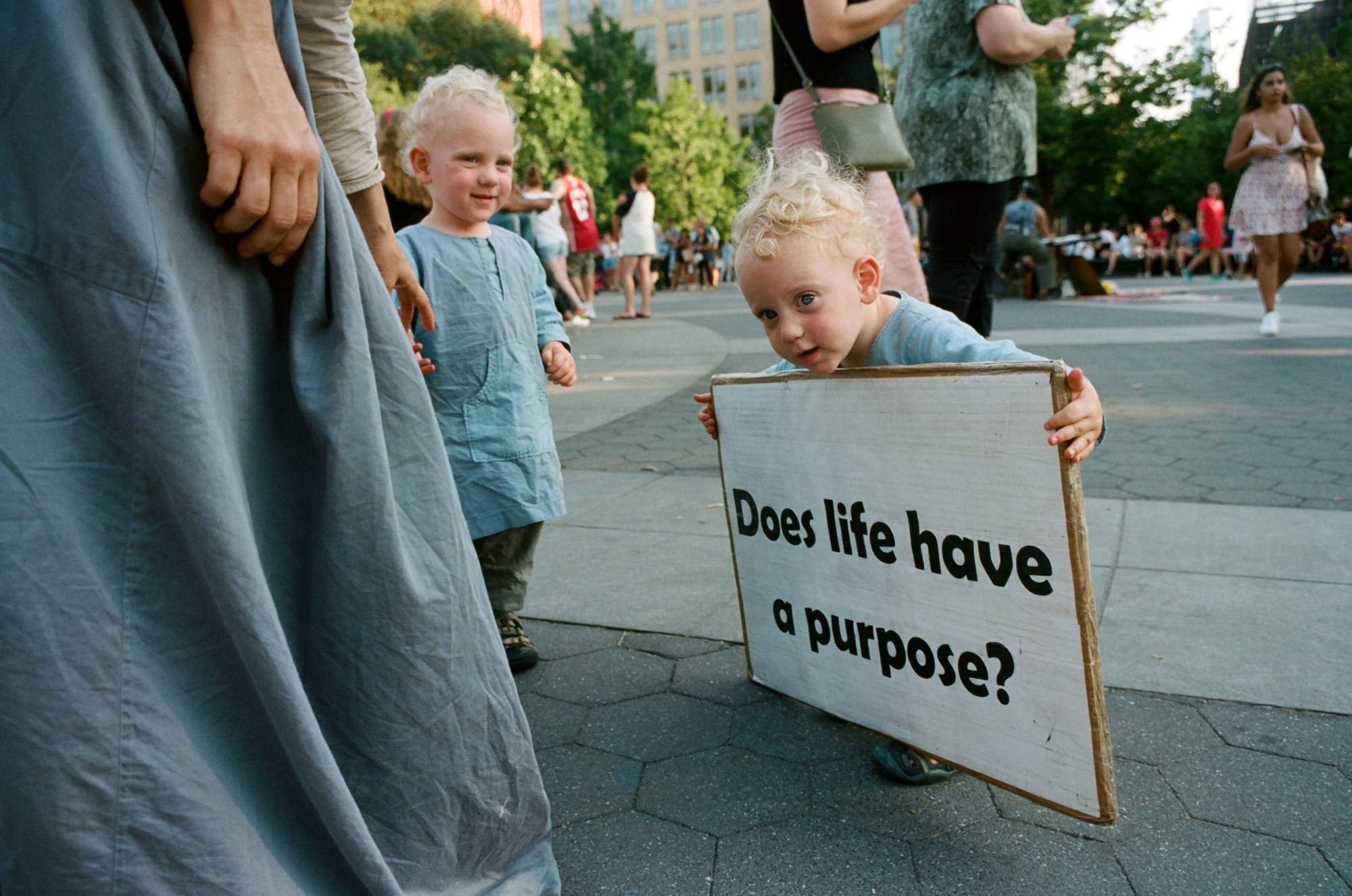
Washington Square Park 8/4/19
That summer I was really manic and in love, but with somebody who was not available to be in love with. I had been single for a million years and could look at it in this really objective, robotic way like ‘wow, look at this new thing I’m experiencing, how interesting. I’m behaving so differently. How odd’. And in the absence of acting on anything, I was totally stuck with this giant feeling all by myself. But I had that clarity, deep into this practice of spending most of my nights going deep in my archive, or having moments where I had to find some original file of some photo and looking at the whole roll, I could remember the context of that day, every frustration. So I had this recognition of the archive being this sort of giant deposit of emotional fossils – I could store things in these pictures that had nothing actually to do with me, but were so infused with how I felt. So I had this unmanageable feeling and converted this energy into work energy, storing this feeling in these pictures. There was a whole summer of those pictures. I didn’t tell anybody what it was, it just looked like my summer vacation. And aside from being a cute anecdote, it really took over as a defining principle of my process.
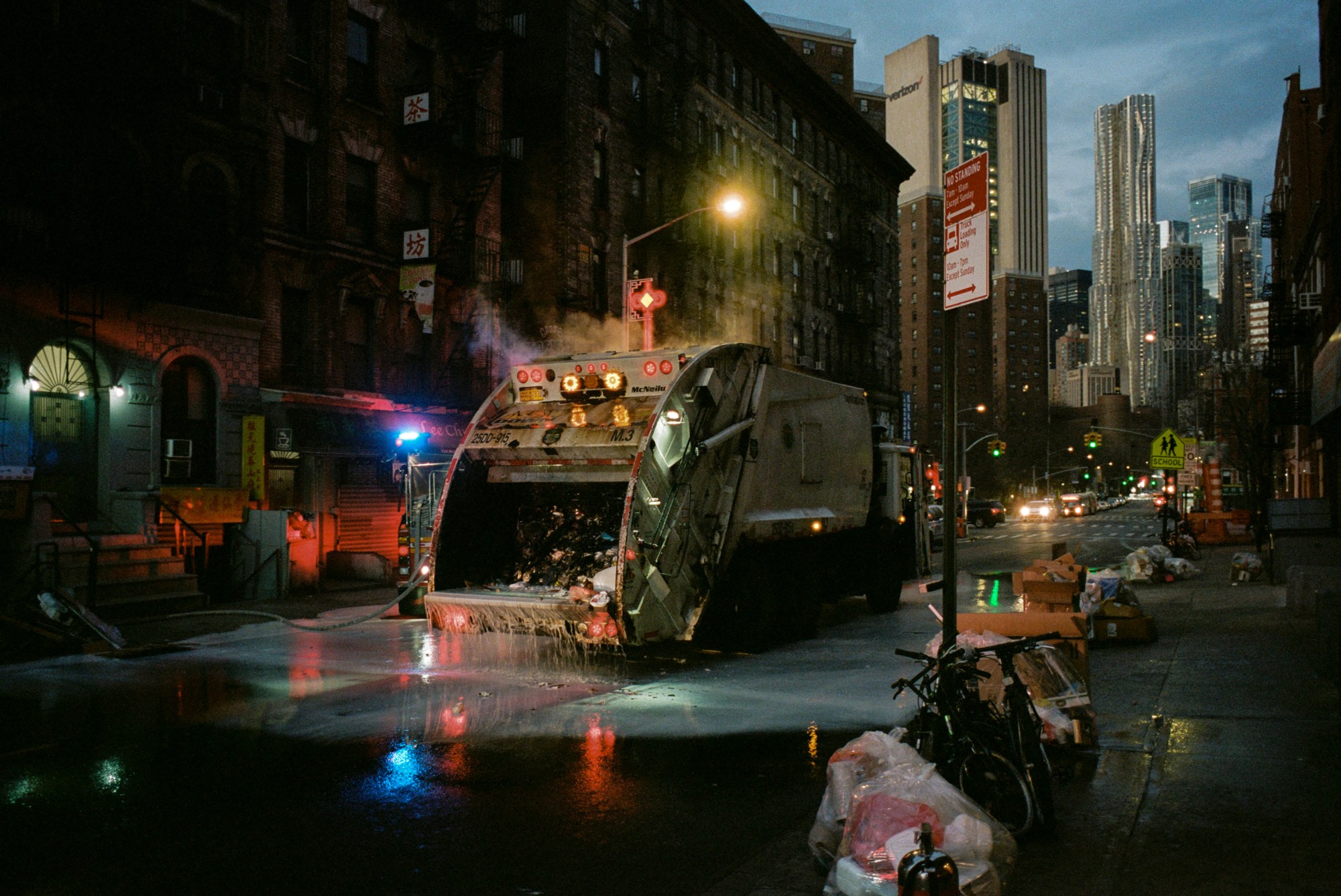
Madison St 1/23/21
At this point the person I had been in love with was my girlfriend, and I had to get up at six in the morning to move her car. I was like a bear just out of hibernation, but because I’m so deep in this psycho ritual I grab my camera. I live up five flights of stairs and as I’m going down there’s this really powerful stink of chemical smoke getting stronger and stronger. I get out the door and there’s not a person in sight, just a garbage truck on fire. The firemen eventually show up and I shamelessly danced around with them until they put it out. This picture is after the fire’s out and the garbage truck’s alone, dripping disgusting, garbage firewater. Aside from a new moment achieved in the cycle of increasing levels of commitment and madness – to the point I bring the camera just in case and get this miraculous thing – it’s a very interesting technical picture. Because of the way Chinatown is structured, it’s morning in the sky, and night on the street.
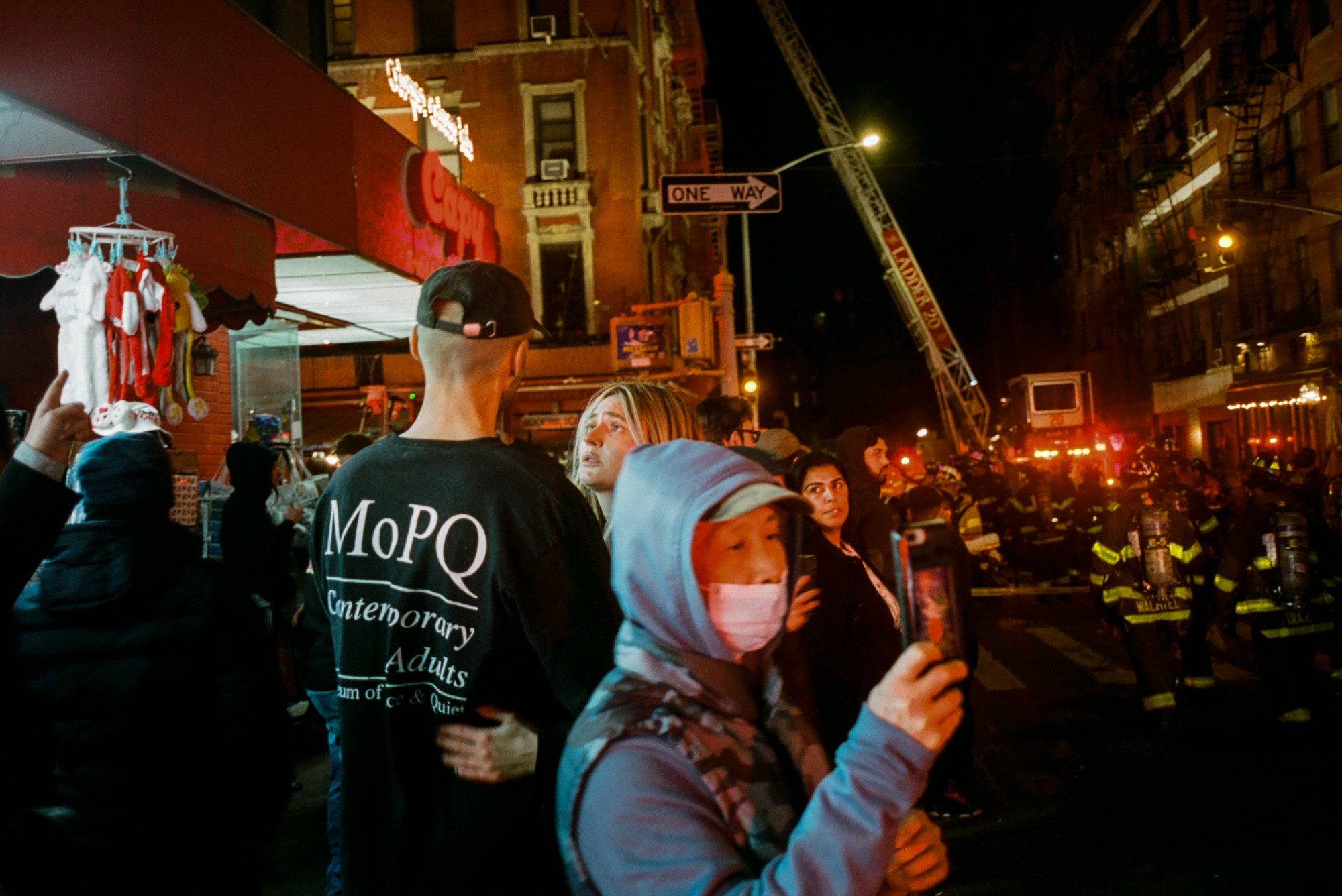
Mulberry and Hester 11/13/23
This will be the least impactful picture, but I thought I should throw in something from last week. Compared to the beginning, [photography] is so much less about pictures to me now. The pictures need to happen – I want to pile up the pictures, that’s the project – but the individual picture means less than the overall story. Somebody smarter than me said it better a long time ago, but your favourite picture is the one you’re going to take tomorrow. It’s so much more about the continuing story than it is about any kind of hit list. I’ve seen all these pictures a million times, they don’t do anything for me. And it’s so much more about the continuing engagement in a way, just being in the world. Staying interested, staying curious, staying present. I guess that’s what the pictures are for me now.
Credits
Photography Daniel Arnold

